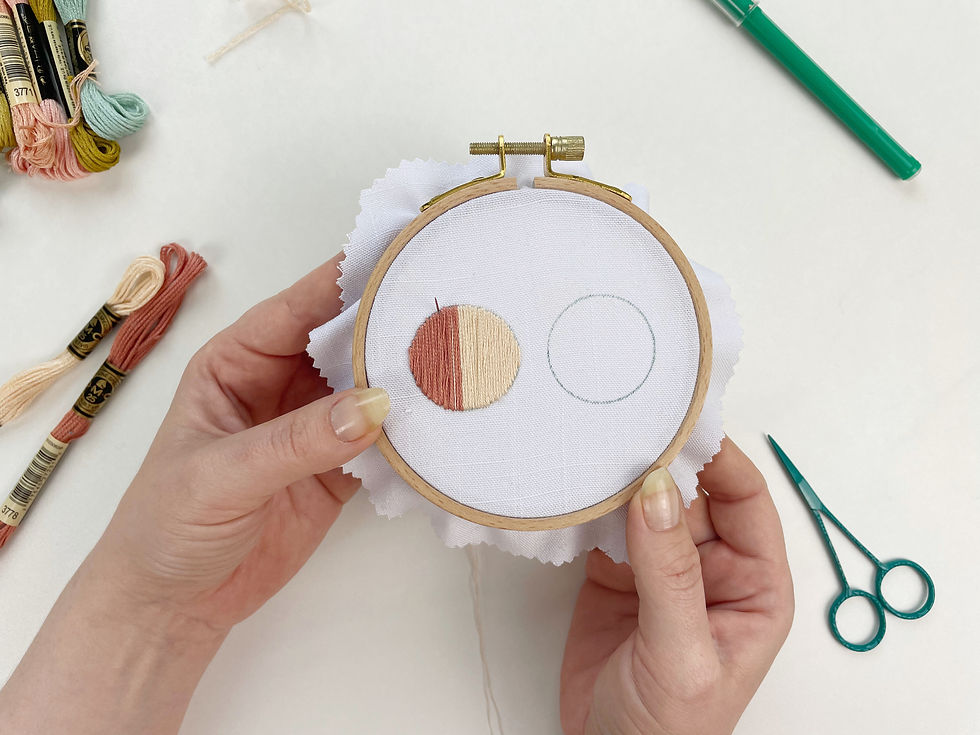Gentle blending for hand embroidery: Blending two shades of the same color
- Hope

- Sep 20, 2021
- 2 min read
Gentle blending is one of my very favorite techniques in hand embroidery! Not only is it an easy way to gently blend two shades of the same color when you have a limited selection at your disposal, but it's also a fun way to add interest and dimension to any of your satin stitched pieces.
I stumbled on this technique when I was stitching a project that required three shades of blue, but only had access to two (the darkest and lightest). This is the technique I used to blend the two together, and I refer to it as "gentle blending" in my work and patterns. I also refer to this as "gentle blending" to help differentiate it from thread painting - should you be interested in proper thread painting, I highly recommend checking out books from Trish Burr and Michelle Staub!

In today's post, I'll show you how to blend two shades of the same color using the gentle blending technique. You can absolutely do this with two totally separate colors, and you can also do it with more than just two colors or shades - once you have the basic technique down, you'll find there are loads of different ways to apply it to your projects!
I've provided written and photo instructions for this technique; should a video be easier for you to follow, I've included one at the end of this post (feel free to jump ahead!).
Step 1: Gather your supplies and choose your two colors.
I'll be using two shades of pink: DMC 3778 (dark pink) and DMC 951 (light pink). I'm stitching on linen fabric (use whatever fabric you like!) in a beechwood embroidery hoop, and I used a green heat-erasable transfer pen to draw my circle shapes.

Step 2: Satin stitch your shape using one shade on the left, and the other on the right.
I used all six strands of my floss to create this satin stitched base.


Step 3: Lay down a few straight stitches on top of your darker shade, using just one strand of your lighter shade.
You'll want to make sure these stitches follow the same direction as that original satin stitching, so that your straight stitches almost disappear into the original stitching as you pull down.







For this example, I added more of these straight stitches toward the center of the shape, and fewer as I moved toward the edge. I did this so that when I'm done, it'll look darker at the edges, and more blended out toward the middle of the shape.

Step 4: Lay down a few straight stitches on top of your lighter shade, using just one strand of your darker shade.




Keep going until you're satisfied with your blending! One very helpful trick is to make sure you're taking periodic photos of your work; I find that doing this helps me to more easily evaluate when my piece is finished (I write a bit about this in my post, "Why does your hand embroidery look bad?").

As I mentioned above, gently blending two shades of the same color is only the tip of this technique's iceberg! Give it a try and see what else you can come up with!
Video tutorial for gentle blending in hand embroidery
I hope this was helpful! Happy stitching!
















Comments